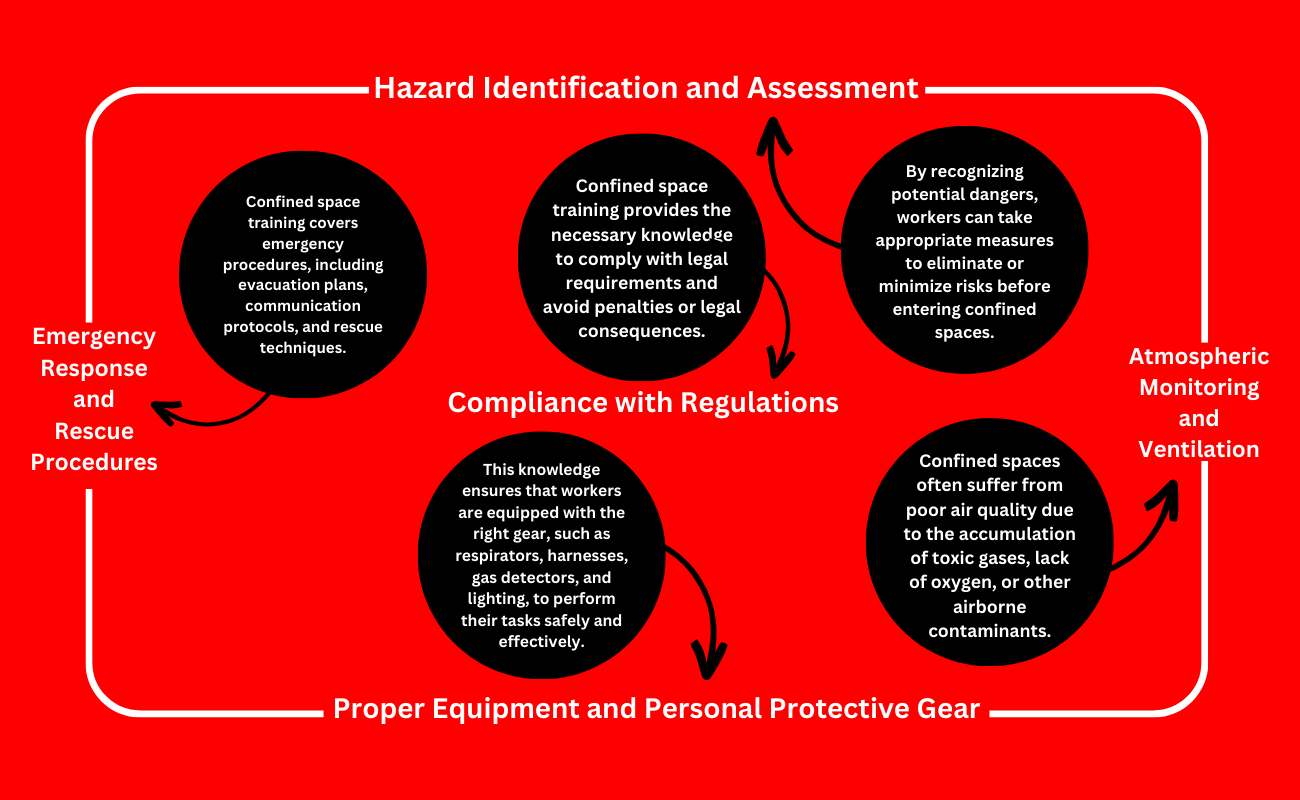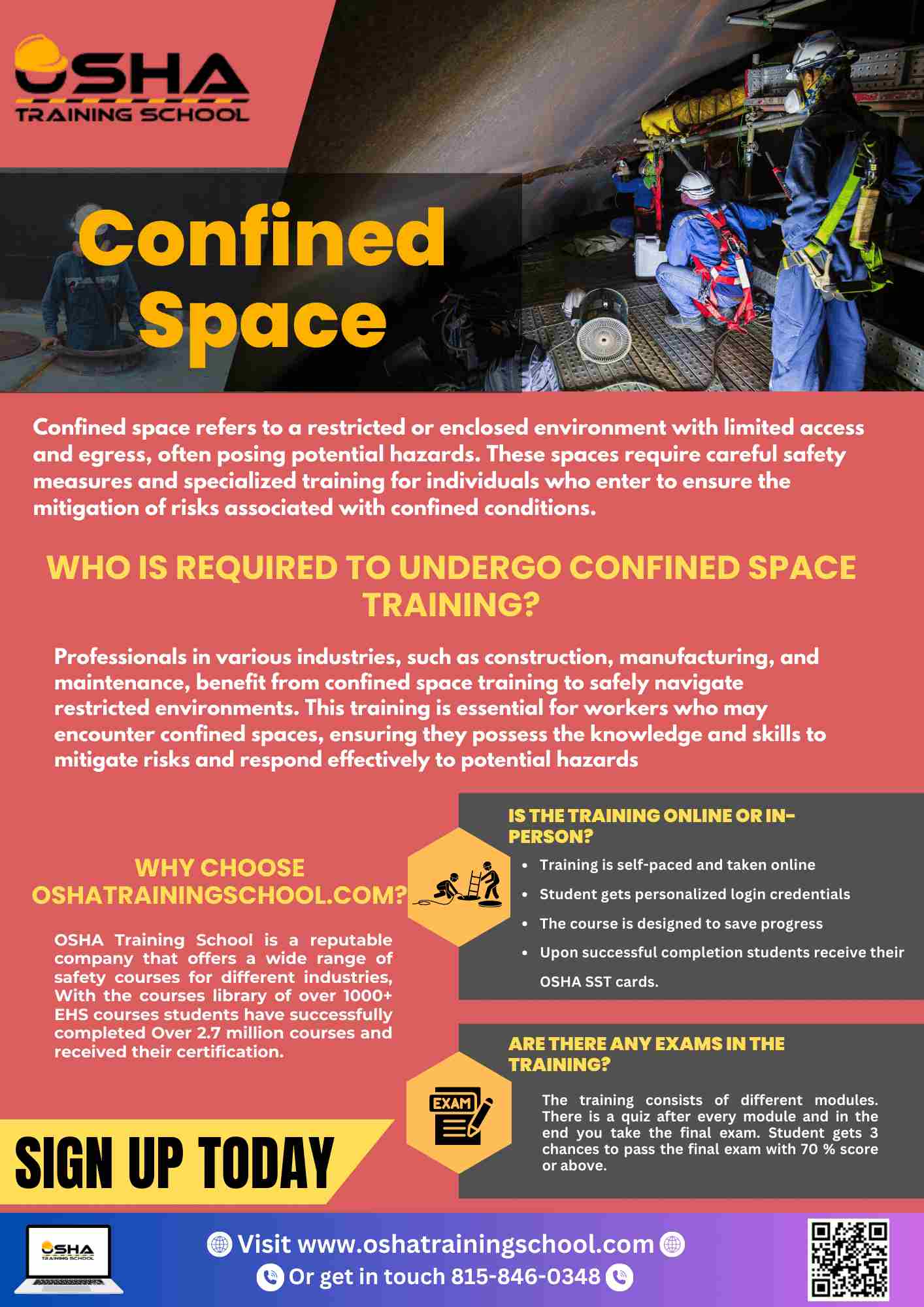
Clean Air Act: History, Standards & Safety
The Clean Air Act (CAA) is a federal law that regulates air emissions from both stationary (industrial) and mobile sources throughout...


The construction industry is an essential sector that plays a significant role in shaping the infrastructure of our society. While construction projects provide employment opportunities and drive economic growth, they also come with inherent risks. Among these risks, working in confined spaces poses a particular challenge that demands specialized training and precautions. In this blog, we will explore the importance of confined space training in the construction industry and how it helps protect workers from potential hazards.
Confined spaces are areas that have limited access points for entry and exit, with inadequate ventilation and potential hazards. These spaces can be found in various construction settings, such as tunnels, tanks, sewers, pipelines, and crawl spaces. Due to their restricted nature, confined spaces pose significant risks to workers, including exposure to toxic substances, oxygen deficiency, entrapment, falls, and fire hazards.

Confined space training plays a crucial role in mitigating risks and ensuring the safety of construction workers. Here are several reasons why this specialized training is essential:
1. Hazard Identification and Assessment:
Confined space training equips workers with the knowledge to identify potential hazards and evaluate risks associated with specific work environments. By recognizing potential dangers, workers can take appropriate measures to eliminate or minimize risks before entering confined spaces.
2. Proper Equipment and Personal Protective Gear:
Confined space training educates workers on the correct use of personal protective equipment (PPE) and specialized tools required for working in confined spaces. This knowledge ensures that workers are equipped with the right gear, such as respirators, harnesses, gas detectors, and lighting, to perform their tasks safely and effectively.
3. Emergency Response and Rescue Procedures:
In the event of an emergency or accident within a confined space, workers must be trained on proper response protocols. Confined space training covers emergency procedures, including evacuation plans, communication protocols, and rescue techniques. This training ensures that workers can respond swiftly and efficiently to protect themselves and their colleagues in life-threatening situations.
4. Atmospheric Monitoring and Ventilation:
Confined spaces often suffer from poor air quality due to the accumulation of toxic gases, lack of oxygen, or other airborne contaminants. Confined space training teaches workers how to conduct atmospheric monitoring using gas detectors and other devices, as well as how to implement ventilation measures to improve air quality and reduce the risks associated with confined spaces.
5. Compliance with Regulations:
Governments and regulatory bodies impose strict guidelines and regulations to protect workers in confined spaces. Employers in the construction industry must adhere to these regulations and ensure that their workers are trained and equipped to work safely. Confined space training provides the necessary knowledge to comply with legal requirements and avoid penalties or legal consequences.


The Clean Air Act (CAA) is a federal law that regulates air emissions from both stationary (industrial) and mobile sources throughout...

In 2023, private industry employers in the U.S. reported 2.6 million nonfatal workplace injuries and illnesses, down 8.4% from the previous...

The OSHA Training Institute (OTI) is the official training and education arm of the Occupational Safety and Health Administration (OSHA)...

The term “OSHA 40-Hour Certification” is one of the most common misconceptions in workplace safety training. Many...

Every year, thousands of workers are injured or lose their lives in workplace accidents. These incidents highlight...

Workplace safety is regulated at both the federal and state levels. In Virginia, the Virginia State Plan, also known as...